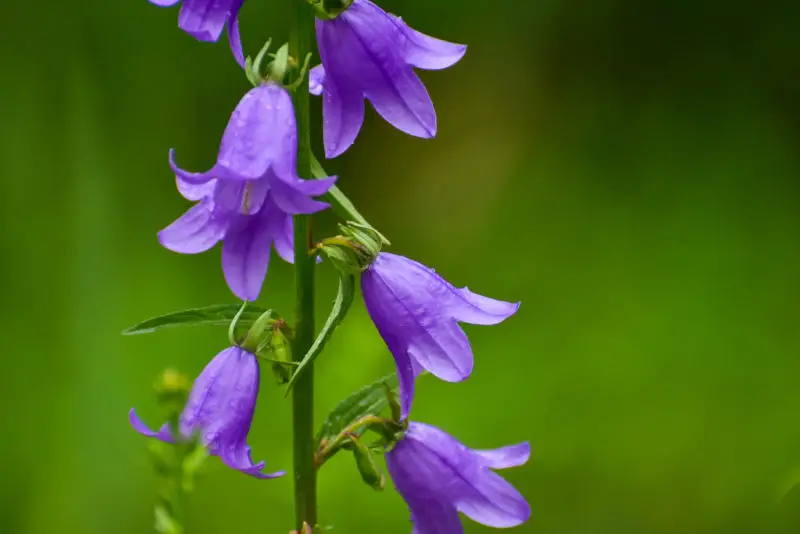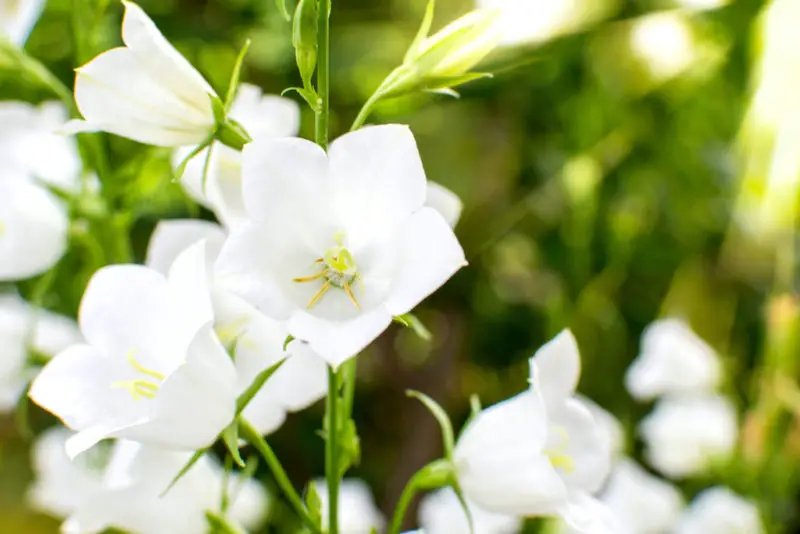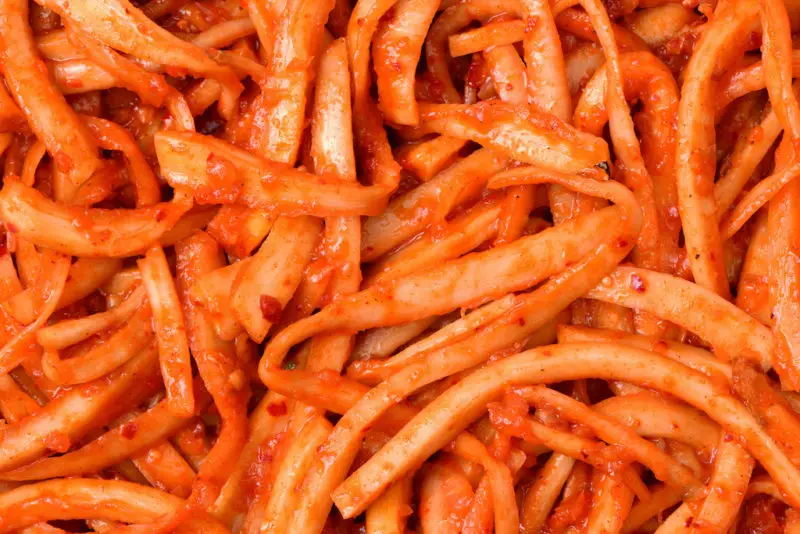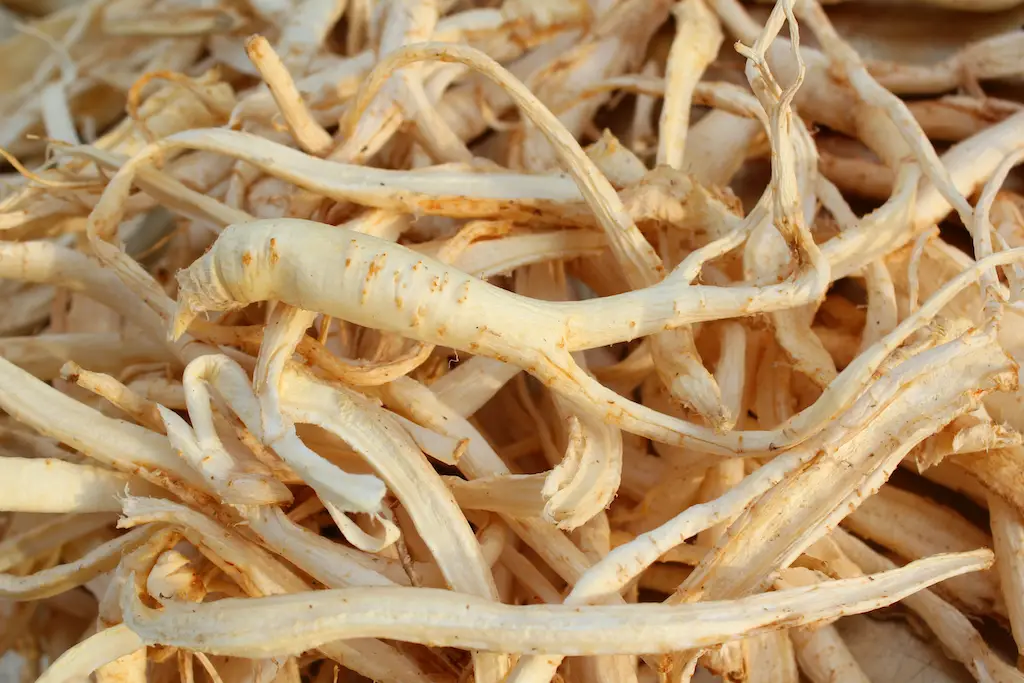This post may contain affiliate links. Please read my disclosure for details at the bottom of this page. As an Amazon Associate, I earn from qualifying purchases on this post about doraji, otherwise known as bellflower root. We hope you enjoy learning about bellflower root in Korean cooking.
Across the countryside of South Korea, beautiful bellflowers grow wildly over the mountainous terrain and cultivated fields. This species of herbaceous flowering perennial plant is native to much of East Asia, including China, North and South Korea, Japan, and the Russian Far East.
Other than bellflower, people also refer to this plant as balloon flowers.
While beautiful in gardens, people in South Korea use this plant as an ingredient in the kitchen. Here, we will learn about the importance of this plant in Korean culture and how they use it in their cuisine.

Doraji in Korean Culture:
In the Korean language, the term for the bellflower plant, as well as the root, is ‘doraji’ (도라지).
Culturally, ‘doraji’ holds a significant place in both North and South Koreans’ hearts, especially because one of the most popular traditional Korean folk songs, ‘Doraji Taryeong’ (도라지타령), is named after the flower. This song tells of wild doraji growing in the mountains and the excitement of those who found it. Below, you can see the first verse:
Doraji, doraji, doraji! In the depths of the mountains is white doraji! Though one or two roots only I pull, My bamboo basket grows full.
Originally, the folk song came from Eunyul in Hwanghae Province.
Further, beyond music, people traditionally used the root to cooking in the kitchen, as well as medicinally treat bronchitis, asthma, tuberculosis, diabetes, and other inflammatory diseases.

Bellflower Root In Korean Cooking:
Bellflower root, both dried and fresh, is one of the most common ingredients in Korean traditional cooking. This ingredient has a chewy texture and has a strong bitter taste similar to ginseng. Below, I list a few examples of Korean dishes that use doraji as an ingredient.
- Doraji-Muchim (도라지무침): In English, ‘doraji-muchim’ translates to ‘seasoned bellflower root.’ This seasoned vegetable can be served fresh or dried and made mild or spicy.
- Bibimbap (비빔밥): Translated to English, ‘bibimbap’ means ‘mixed rice.’ Often, people add seasoned bellflower root as an ingredient to the rice bowl along with spinach, soybean sprouts, mung bean sprouts, and more!
- Doraji-Cha (도라지차): In South Korea, people make tea using the roots of bellflowers.
- Doraji-Jeonggwa (도라정과): ‘Jeonggwa’ refers to sweets made by boiling seeds, roots, or fruits in honey or sugar water.
Beyond these dishes, doraji can be used to infuse liquors, teas, and more!
Bellflower Root Frequently Asked Questions:
Now that we learned about bellflower root, we want to answer some potential questions you may have as well! If we do not answer your question about maneuljjong, feel free to leave a comment in the section below or email us at [email protected].
When Is Bellflower Root Season?
Bellflowers start reappearing after the winter in late spring. They eventually flower in the summer when they come into season.

How Do You Store Doraji?
You can store bellflower in two different ways:
- First, you can keep fresh doraji in your refrigerator. Once used in a dish, doraji can stay good for a few weeks.
- Second, you can store dried doraji in a cool, dark place away from sunlight. Once opened, place the bellflower roots in an airtight bag. Follow the instructions on the bag to decide whether to keep the roots in the refrigerator or pantry after opening. For longtime storage, place the bellflower roots in the freezer.
Where To Buy Bellflower Root?
On one hand, you can find fresh bellflower roots in Asian grocery stores when they are in season. On the other hand, you can find dried bellflower roots all year long online or in Asian markets.
We Hope You Enjoyed Learning Bellflower Root!
In the end, I hope you enjoyed learning about doraji, otherwise known as bellflower root. If so, let me know in the comment section!
If you would like to read more about cooking, you can find further recipes on this blog. I listed some of my favorite Carving A Journey recipes below! For reference, many recipes are influenced by my family’s blended Korean and Southern heritage.
Korean Ingredient Articles:
- What are Perilla Leaves (Kkaennip)?
- Soybeans in Korean Cooking (Kongnamul)
- Mung Beans in Korean Cooking (Sukju)
- Garlic Scapes in Korean Cooking (Maneuljjong)
- Enoki Mushrooms in Korean Cooking (Paengi-Beoseot)
Further Carving A Journey Korean Recipes:
If you have any questions or comments, you can also email me at [email protected]. And, finally, I would love to hear from you through our social media as well! You can follow me at @carvingajourney on Instagram, Facebook, and Pinterest. I also started a vlog YouTube channel with my husband! Or, if you would like more articles like these, you can subscribe to the blog by joining the mailing list. I hope you enjoyed learning about bellflower root! Thank you so much for stopping by!
Carving A Journey is a participant in the Amazon Services LLC Associates Program, an affiliate advertising program designed to provide a means for sites to earn advertising fees by advertising and linking to Amazon.com. Although we may earn commissions for our endorsement, recommendation, testimonial, and/or link to any products or services from this website, these opinions are my own and I fully support these products.

